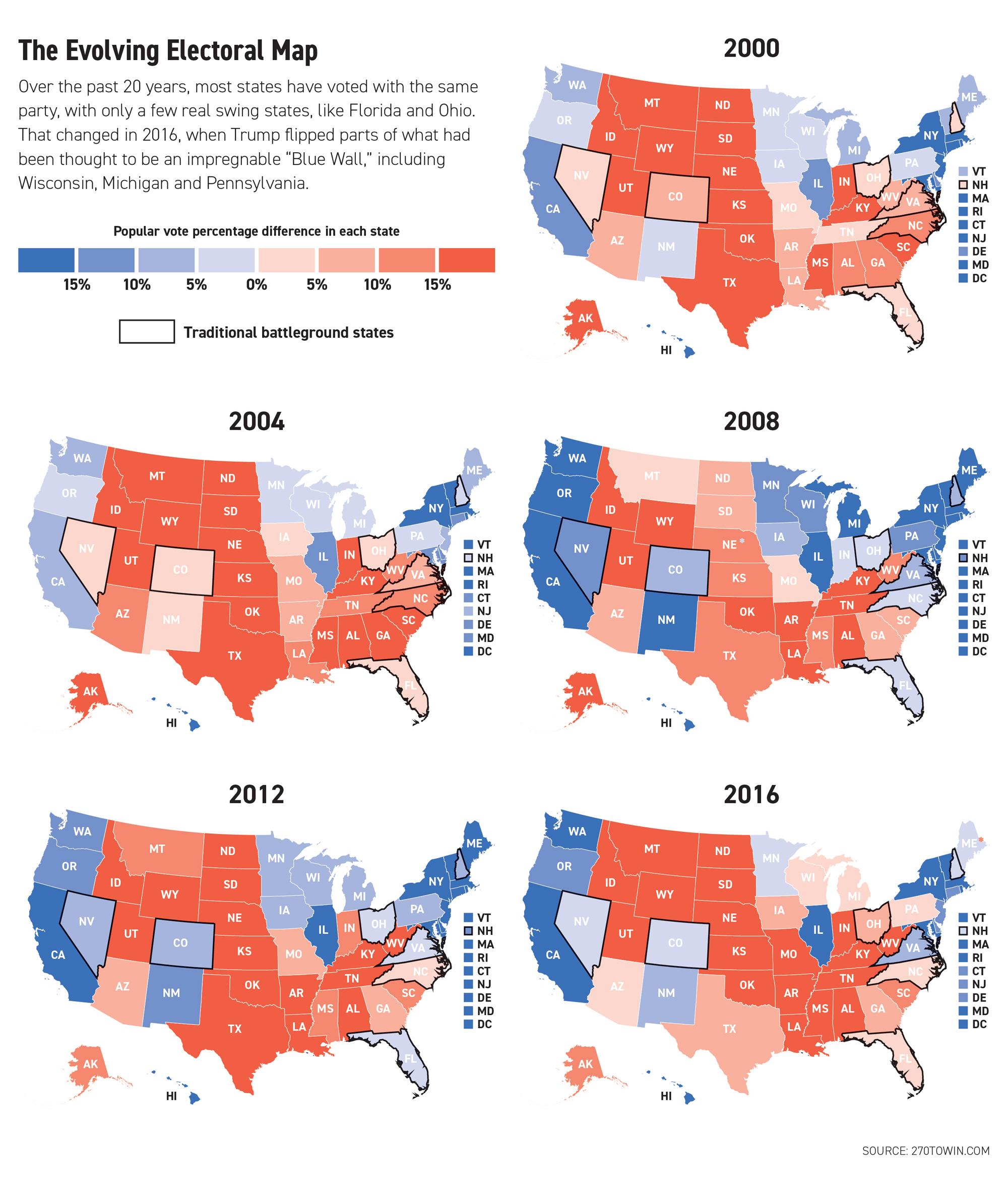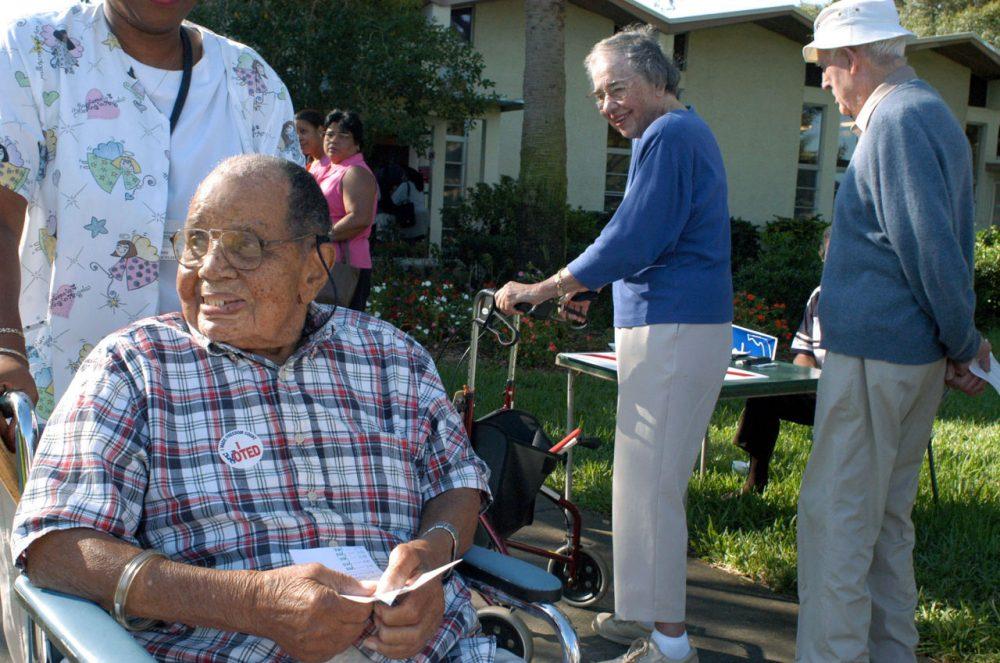By most conventional measures, Donald Trump is getting crushed right now. In the presidential race, Joe Biden has an average lead of about 9 points in the RealClear Politics average, and solid leads of over 5 points in the three states that cost Hillary Clinton the election in 2016 – Pennsylvania, Michigan and Wisconsin. He also has smaller leads in Republican-leaning states such as North Carolina and Arizona, leading some Democrats to push to expand the map even further, with the goal of contesting not only Ohio and Georgia, where the gap between the two parties seems to be closing, but above all the big prize, Texas, where current polls show the candidates essentially tied.
The Biden team is moving cautiously, though, with its campaign manager Jennifer O’Malley Dillon quoted in The New York Times as saying “When you look under the hood, we are ahead in the majority of the battleground states, but we expect them to tighten because these are battleground states in a pretty polarized electorate.” The message is clear: it’s not over yet, so let’s not lose sight of the primary goal of guaranteeing victory.
There is certainly value in expanding the map: not only does it force the Trump campaign to commit resources to playing defense, but it increases activity among the base, engaging the electorate. This also mitigates one of the pernicious side-effects of the electoral system, that voters outside of a few swing states are mostly ignored by the two major campaigns. Yet the Biden camp is smart not to get ahead of themselves, as the tipping point is unlikely to come from these new states, and with four months of this crazy 2020 to go before the election, plenty can still happen.

Winning the three Rustbelt states would be enough for the Democrats to take the White House, barring shifts in Clinton states from 2016, but even with leads of over 5 points today, there is still some justifiable anxiety: not only did polls underestimate Trump’s support there in 2016, but they tend to tighten after Labor Day (this year, September 7) when pollsters report likely voters rather than registered voters. So it’s justified not to consider those states to be in the bag yet.
The real bellwether is Florida. As of July 13, Biden’s average lead is 5.2% in the Sunshine State. If this advantage holds, Trump would have essentially no chance of winning the election. Florida would be insurance against faltering in one of the Midwest states, while failing to break through in a non-Clinton state from 2016 like Arizona. It would also provide a big Democratic victory without the need to rely on tougher targets such as Ohio or Texas. A win in one of the latter would probably mean that Florida – and the election – is already in the bag.
Florida also reflects the one segment of the population that Trump absolutely cannot afford to lose: seniors. Most polls show a significant drop in senior support for the president, in particular due to his poor handling of the coronavirus. Enthusiasm for Biden among youth and minorities is tepid, and in some cases lower than Hillary Clinton’s, but at the moment he is more than making up for it with inroads among seniors and white voters in general.

Before the onset of the coronavirus pandemic and the protests over the killing of George Floyd, many were convinced that Donald Trump was cruising towards re-election. I wasn’t one of them. In my view Trump faced an uphill road to a second term, because his 2016 victory depended on independent and swing voters giving him the benefit of the doubt, based on his outsider positions and the unpopularity of Hillary Clinton.
Trump has made some significant strides in the past four years. For starters, he hasn’t launched a new war, something no other president of the past 40 years can claim; and while free-market economists recoil at his rhetoric and actions on trade, the re-writing of NAFTA and attempts to rebalance relations with China are steps in the right direction. However, as for actually rebuilding Main Street rather than helping Wall Street, and improving conditions for the middle class in general, his record is weak. Adding his inconsistency and divisiveness already made it unlikely he could squeak by again.
The profound crisis caused by Covid-19, which is far from over in part due to the premature rush to reopen, and the president’s difficulty in dealing with the protests over police brutality, have caused him to drop even further.
At this point the race seems close to being over, but there are three things that make me think it’s too early to call: 1. the quality of the Democratic candidate; 2. the disruption to the voting process that will be caused by the virus; and 3. the overreach by liberal groups that have transformed protests with broad support among the population into the beginning of a cultural war over political correctness.
First, Biden’s weaknesses. The former vice president has done fine so far while campaigning from his basement and making targeted media appearances. Letting Trump founder is working nicely. Yet Biden’s weaknesses are well-known: over 40 years of pro-establishment votes and positions to attack, his role in Ukraine which Trump will attack as corrupt, and his propensity for gaffes and incoherent speech. The Republicans are counting on the latter tendency during the debates, and at least one poll indicates that 55% of Americans suspect Biden may be showing early signs of dementia.

Second, is the voting process. Infections are still on the rise, and there’s little reason to believe the situation will be under control come November, when expectations already were for a second wave. What will voting look like? There will certainly be more mail-in ballots, but the legal battles launched by Republicans on this front will continue. And how will fear of the virus affect people being willing to wait in line, which by the way is more common in lower-income areas, that skew Democratic. Data is increasingly showing that lockdown or not, people limit their movements based on the gravity of the contagion.
Last, is the culture war. It’s one thing to target statues of Confederate generals, quite another to try to erase memory of George Washington and Ulysses S. Grant. Trump seems to have found his footing a bit with his July 4th speech at Mt. Rushmore. Democrats and the establishment media freaked out, but the speech was actually patriotic, and even somewhat inclusive. The speech writer – reported to be Stephen Miller – was careful to condemn slavery and cite numerous important African-Americans from US history. Yes, there were some whistles to the base, with attacks on “far-left fascism” and totalitarian “angry mobs,” but Trump seems to have found a way to buoy his supporters with a pro-America message, that cultural liberals ignore at their peril.
Biden is doing his best to avoid the trap, keeping his distance from the most aggressive positions on both policing and cancel culture. On economics, on the other hand, he is moving to shore up his progressive flank, making it be known that Elizabeth Warren and Bernie Sanders have his ear, and that he’s planning an FDR-style presidency.
These are smart moves, but Biden’s success is tied more to Trump’s difficulties than to his own skills at reinvention. And for the president, it’s going to be hard to shift attention to his preferred battleground with the end of the crisis nowhere in sight, that forces him to play defense in areas where he has little room for error. As the map, and the virus, expand, time is running out for Donald Trump.
